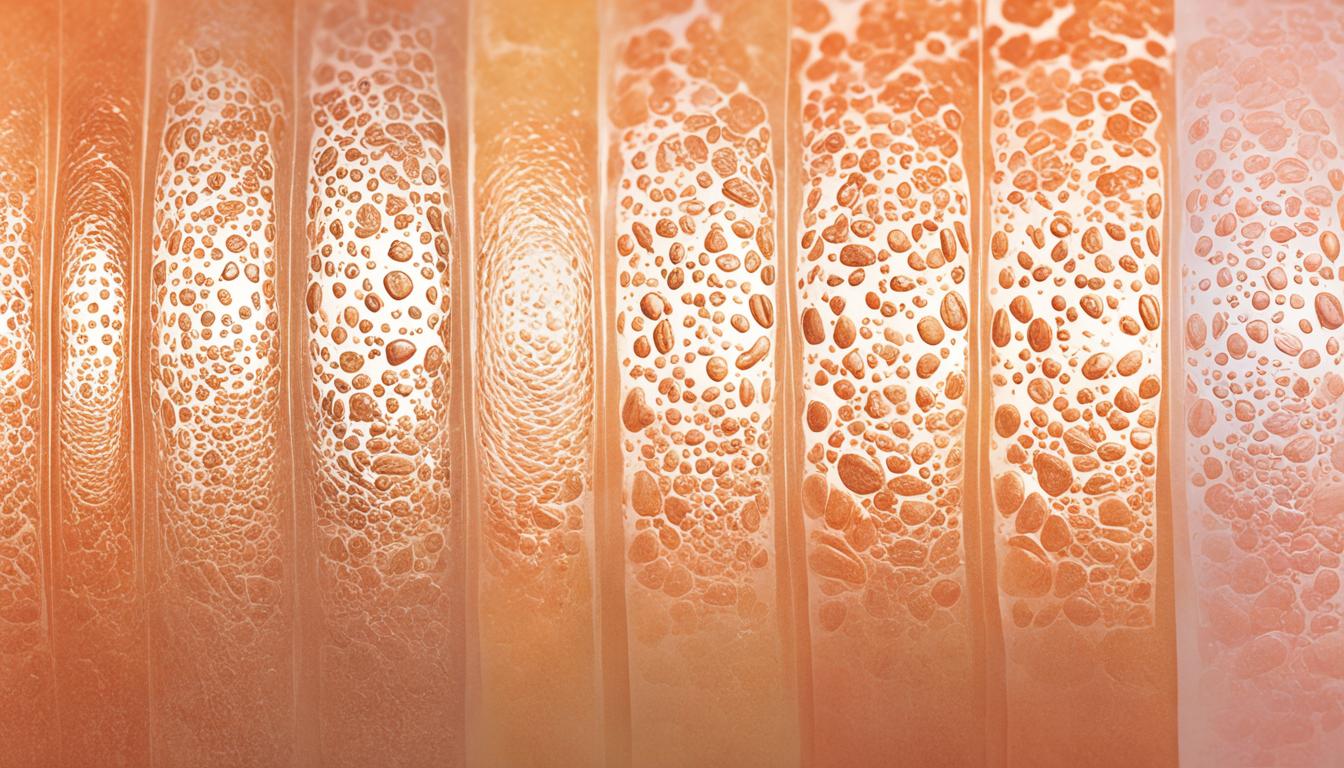Sun spots, or solar lentigines, are dark patches that show on the skin. They usually appear on parts that get a lot of sun like the face, hands, and shoulders. These patches occur when the skin makes too much melanin, the coloring pigment.
While not dangerous, these spots concern many because of how they look.
- Solar lentigines, also known as sun spots or age spots, are hyperpigmented patches on the skin.
- They typically appear on sun-exposed areas like the face, hands, and shoulders.
- The dark spots are caused by an overproduction of melanin, the skin pigment.
- Solar lentigines are generally harmless but can be a cosmetic concern.
- They can be effectively treated with various treatment options.
Causes and Risk Factors of Solar Lentigines
Solar lentigines, also known as sun spots or age spots, are common. They are due to too much sun exposure. The skin reacts by producing more melanin. This causes dark spots.
Older age and hormonal changes can also lead to sun spots. These factors make the skin more likely to develop dark spots. Anyone can get solar lentigines, regardless of their skin color.
Some people might be more likely to get these spots because of their genes. This genetic link is essential to understand. Solar lentigines can impact everyone, not just people with certain genes.
Risk Factors of Solar Lentigines
| Risk Factors | Description |
|---|---|
| UV Exposure | Long-term exposure to the sun’s UV radiation |
| Aging | Natural changes in the skin over time |
| Hormonal Changes | Changes in hormone levels, such as during pregnancy |
| Genetic Predisposition | Inherited traits that increase the likelihood of developing solar lentigines |
Using sunscreen and wearing protective clothing can lower your risk. Avoiding the sun at its strongest is also wise. Check your skin regularly for any new spots to catch them early.
Treatment Options for Solar Lentigines
Sun spots, also known as solar lentigines or age spots, can bother anyone because of their dark look. Luckily, there are many ways to fade these spots and help your skin look more even.
Using special cream is a common first step. These creams have ingredients like hydroquinone, retinoids, or corticosteroids. They make the dark spots lighter and help your skin look smoother. You can use these creams at home, which is easy for most people.
Other options include chemical peels, laser therapy, and freezing the spots. Chemical peels use a solution to remove the top layer of your skin. Then, new, healthy skin grows back. Laser therapy targets the dark spots with light to remove them. And freezing, or cryotherapy, destroys the spots with liquid nitrogen.
The best treatment varies for each person, depending on how bad their spots are. Seeing a dermatologist is the first step towards your best plan. With the right care, you can make your skin tone more even. This lowers the look of sun spots and helps you feel better about your skin.

